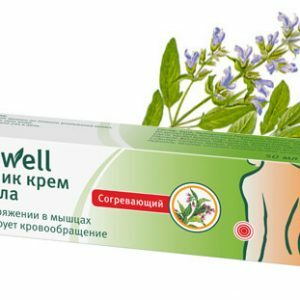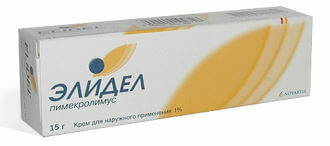Loratadin: instructions for use, analogues
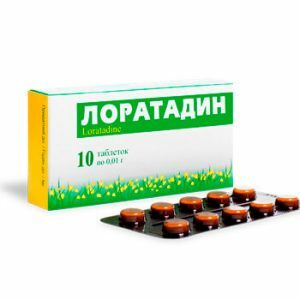
Loratadin is an antiallergic drug that belongs to the category of long-acting H1-histamine receptor blockers.The drug is able to reduce or quit allergy symptoms( including itching) for half an hour.Its effect lasts an average of 1 day.
Table of contents: Active ingredient and dosage forms When should I take Loratadine?Who is contraindicated in Loratadin?Pharmacodynamics and pharmacokinetics Possible side effects Overdose Interactions of Loratadine with alcohol Additional information Storage conditions, analogues of LoratadinActive ingredient and dosage forms
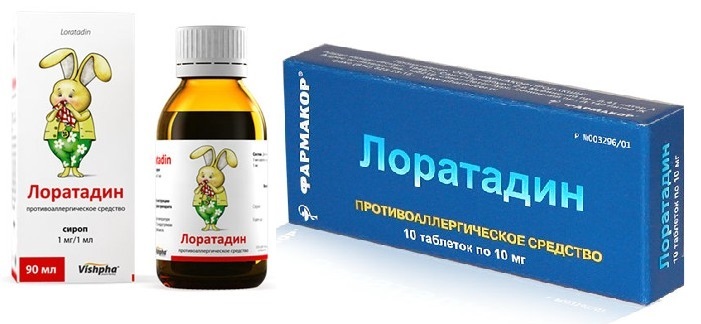
The biologically active ingredient of the drug is loratadine.Each tablet contains 0.01 g of this substance, as well as auxiliary components - MCC, collidon-25, starch, lactose( milk sugar) and aerosil.
The drug is produced by pharmaceutical companies in tablet form and as a syrup.
Tablets are supplied to pharmacy chains in contour packs of 10 pcs.In each box there are 1 or 2 packs.
When should I take Loratadine?The indications for the administration of this pharmacological agent are: -
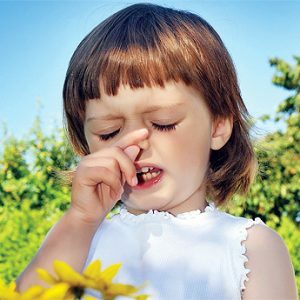 allergic rhinitis and conjunctivitis;
allergic rhinitis and conjunctivitis; - "hay fever";
- angioedema( Quincke's edema);
- urticaria( including idiopathic);
- skin itch( of different origin);
- of allergic dermatosis;
- eczema( chronic course);
- pseudoallergic reactions arising under the action of histamine-liberators.
 allergic rhinitis and conjunctivitis;
allergic rhinitis and conjunctivitis;Note: Loratadin should be taken if a hypersensitivity reaction develops to the bites of non-poisonous insects and other arthropods.
Who is contraindicated in loratadine?
The product is categorically contraindicated for persons with individual hypersensitivity to the biologically active component and auxiliary substances of tablets .It is also not prescribed for congenital lactase deficiency, since the drug contains milk sugar.
Loratadin should not be taken to women during the period of gestation, because the fetotoxic effect of is not ruled out.If it is necessary to carry out anti-allergic therapy during lactation, the question is raised about transferring the baby to breastfeeding with artificial milk formula.
Note: Loratadin is not prescribed for children under 2 years of age.
Dosage regimen
Tablets are taken orally without chewing, and with enough liquid.The agent is prescribed for the course treatment( the average duration is from 10 to 15 days).
Please note: If the indication is available, the attending physician may extend the course to 4 weeks.In certain clinical situations, a single dose is sufficient for relief of symptoms.
For adults and adolescents over 12 years of age, the daily dose is 10 mg( 1 tablet).
If the child's body weight & lt;30 kg or less than 12 years of age, the daily dose is halved( 1/2 tablet).
With diagnosed functional liver failure, the patient is prescribed 5 mg of Loratadine.
Pharmacodynamics and pharmacokinetics
 Loratadin blocks specific H1-histamine receptors by suspending the release of mediators of allergy( histamine and leukotriene C4) from mast cells( highly specialized immune cells of connective tissue).Due to this, the drug stops the development of hyper-responsiveness reactions or greatly facilitates the clinical symptoms of allergy.Loratadin reduces exudation by reducing the permeability of the walls of small blood vessels.Under the action of the drug, the itching and spasms of smooth muscle cells are cured.The therapeutic effect develops within half an hour after taking the tablets inside, and reaches its maximum after 8-12 hours. The antiallergic drug acts on an average day.It has almost no effect on the central nervous system, since the active substance is unable to overcome the blood-brain barrier.
Loratadin blocks specific H1-histamine receptors by suspending the release of mediators of allergy( histamine and leukotriene C4) from mast cells( highly specialized immune cells of connective tissue).Due to this, the drug stops the development of hyper-responsiveness reactions or greatly facilitates the clinical symptoms of allergy.Loratadin reduces exudation by reducing the permeability of the walls of small blood vessels.Under the action of the drug, the itching and spasms of smooth muscle cells are cured.The therapeutic effect develops within half an hour after taking the tablets inside, and reaches its maximum after 8-12 hours. The antiallergic drug acts on an average day.It has almost no effect on the central nervous system, since the active substance is unable to overcome the blood-brain barrier.
Note: Loratadin is not addictive!
The medicine is absorbed in the digestive tract as soon as possible and fully absorbed.The maximum serum concentration is fixed after 1.5-2.5 hours( food intake slows down this process by approximately 1 hour).The level of conjugation with blood proteins reaches 97%.The process of biotransformation of Loratadine occurs in the liver.The average elimination half-life of unchanged substance is from 3 to 20 h, and the active metabolite is descabroethoxyloratadine from 9 to 92 h.
Note: The maximum plasma concentration and elimination half-life are increased in elderly patients and alcoholics.The worse the functional activity of the liver, the higher the numbers.
Loratadine and its metabolite are excreted by the kidneys and intestines.Hemodialysis and virtually no effect on the pharmacokinetics.
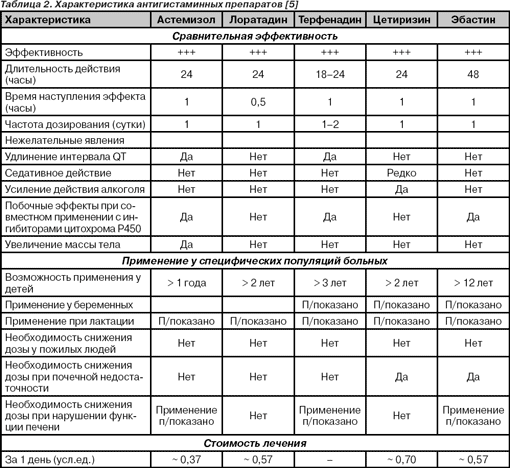
Possible side effects of
Most patients tolerate this drug well.
In rare cases, the following side effects of Loratadin are noted:
- unmotivated sense of anxiety;
- drowsiness during the day;
- asthenia;
- high fatigue;
- depression;
- nervous excitement( more often - in children);
- trembling of limbs( tremor);
- sensitivity disorders( paresthesia);
- convulsions( mainly in the calf muscles);
- joint and muscle pain;
- thirst;
- hyperhidrosis;
- dyspepsia disorder;
- dryness in the oral cavity;
- cough;
- bronchospasm;
- dysmenorrhea( including increased blood separation during menstruation);
- transient reduction in visual acuity;
- changes in blood pressure( increase or decrease);
- pain in the ears;
- blepharospasm;
- alopecia( hair loss).
Overdose
If the recommended dose is significantly exceeded, the patients develop cephalalgia, drowsiness and tachycardia.If an overdose occurs, seek immediate medical attention.
It is necessary to rinse the stomach, provoking vomiting( for this you can use Ipecakuanas syrup).Additionally, enterosorbents are assigned( for example, ordinary or white activated carbon).
Interaction with other pharmacological agents
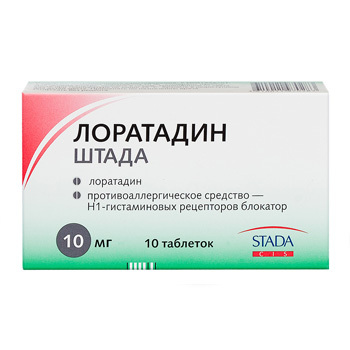 The plasma concentration of Loratadine has the property of increasing with concurrent administration of ketoconazole, Erythromycin and Cimetidine.
The plasma concentration of Loratadine has the property of increasing with concurrent administration of ketoconazole, Erythromycin and Cimetidine.
Efficacy of the drug is reduced by Rifampicin, Phenytoin, Phenylbutazone, tricyclic antidepressants and barbiturates.
Interaction of Loratadine with alcohol
Ethanol reduces the effectiveness of this drug, so it is advisable to refrain from alcohol intake( including medicinal tinctures) for the duration of treatment.
Additional information
Particular care should be taken when administering Loratadine to patients with acute or chronic liver failure.
Loratadin is able to reduce the speed of psychomotor reactions, negatively affecting the ability to concentrate.From the management of transport and other potentially hazardous activities at the time of treatment should be discarded.
Storage conditions
Loratadine should be kept in places with low humidity and shielded from light.
Permissible storage temperature - not higher than + 25 ° С.
Shelf life - 2 years from the date of issue( marked on the package).
Keep out of the reach of children!
Note: analogues of Loratadin are the funds of Lomilan, Claritin and Lorahexal.
Vladimir Plisov, medical reviewer

